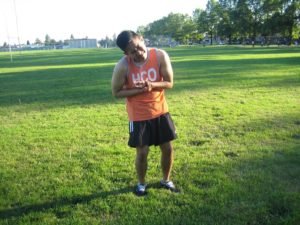A sprained thumb is due to the excessive backward bending of the thumb from its normal range of motion. The injury involves the ligaments that support the joint at the base of the thumb.
https://www.youtube.com/watch?v=AlK4YDI6Gfc
Indications of a sprained thumb
The indications of a sprained thumb usually include the following:
- Thumb pain at the time of injury

Pain or discomfort in the web of the thumb when moved. - Pain or discomfort in the web of the thumb when moved
- Swelling over the metacarpophalangeal joint at the base of the thumb that might be visible
- Joint laxity and instability
Management
A sprained thumb is a common injury in skiing as well as in contact sports such as rugby and basketball.
The initial treatment involves the PRICE method (protection, rest, ice, compression, elevation). The individual with a sprained thumb must rest the hand and protect it from further injury by taping or using a support for the wrist and thumb.
Apply an ice pack as soon as possible after the injury. Make sure that a barrier is provided before application such as a moist tea towel. The ice pack must be applied for 10 minutes every hour during the initial 24-48 hours.
A compression bandage or support can be used to minimize the swelling. This must be used always during the acute stage. A rehabilitation phase is started so that specific taping or a splint for the thumb must be used to prevent the thumb from bending backwards.
The individual can return to sport within 4-6 weeks depending on the extent of the injury. Strengthening exercises must be performed to restore stability and prevent re-injury. If not properly treated, there is a higher risk for re-injury and lasting instability that will require surgery.
More Information / Disclaimer
The information posted on this page on sprained thumb is for learning purposes only. Learn to recognize and manage thumb injuries by taking a standard first aid course with Saskatoon First Aid.

